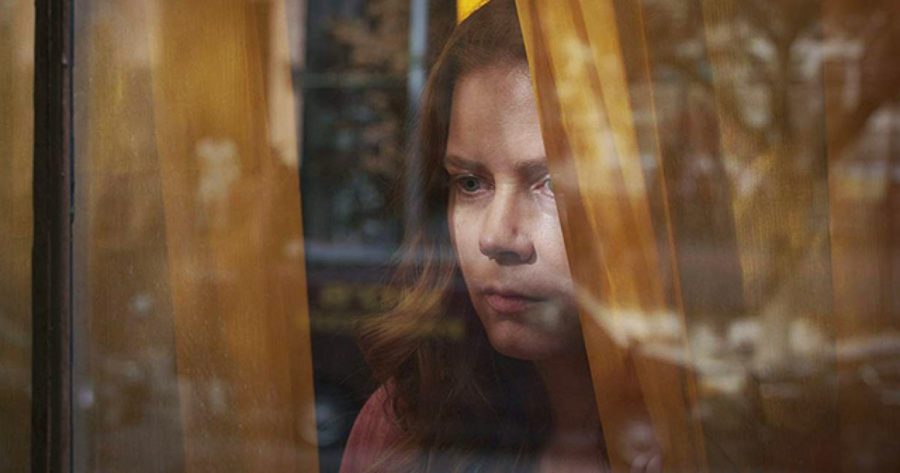A Review of The Woman in the Window
Netflix’s newest film is a great adaptation of a famous Alfred Hitchcock movie.
image courtesy of Entertainment.ie
Amy Adams plays Dr. Anna Fox in Netflix’s newly released film.
June 1, 2021
Maybe it was because I was excited to see my favorite Enchanted actress play an obsessive, agoraphobic New Yorker, but after finishing Netflix’s The Woman in the Window with a favorable opinion, I was shocked to see its horrible reviews from critics and audiences alike.
Dr. Anna Fox, played by Amy Adams, lives by herself in a New York City apartment above her landlord, David. Because her mental health keeps her from going outside, although she is ironically a child psychologist, she spends most of her time keeping an eye on her neighbors and calling her therapist.
After speaking judgmentally of a family that has just moved in across the street, Fox is visited by their son who seems to connect with her almost immediately. He brings her a gift on behalf of the family and asks to be her friend, an offer that she happily accepts. Later, she is visited by the boy’s mother who she also connects with in an equally quick manner.
Because of these two meetings, Fox develops a sort of protective relationship with both of them, especially after realizing the abusive nature of Mr. Russell. This is what sends her into a spiral that drives the rest of the movie to its end.
The plot was interesting, featuring enough twists to surprise the audience while not making it too overwhelming to watch. When there are plot twists, it does not feel as if they are too rushed or forced, but instead, they are well-timed and carried out in a unique manner. Although some twists in the film are predictable if the viewer pays attention to smaller details, they are still as fun to watch as the less foreseeable ones.
The main character is played well, and she is featured in nearly every minute of the film, as it is based on her perspective of the situation alone. This was definitely the best choice that the director could have made because the most exciting parts of the movie are based on what Fox got right and wrong, and whether or not her mental illness impacted this.
Some critics that dislike the film argue that it tries too hard to be on the same level as Alfred Hitchcock’s classic film Rear Window, a story in which a man confined to sitting in a wheelchair watches his neighbors and eventually sees them murder their dog. Despite their storylines that practically mirror one another, Hitchcock’s ideas are only amplified in The Woman in the Window, which dramatizes them enough to make the newer movie all the more exciting.
Others critique the “self-conscious” nature of the acting and the “banality” of the plot while pointing out the film’s inability to fit into one specific genre.
While these complaints may be true through some lenses, such as those of esteemed movie critics that are yearning for something more original, this film does exactly what it was intended to do. It modernizes a classic story and features talented actors that execute their roles perfectly.
When a movie has an exciting plot full of twists and turns that are accompanied by well-developed characters and a captivating storyline, it does not necessarily need to fit into one specific genre. With a film like The Woman in the Window, the responsibility to place it into a category can be placed on the viewer because, ultimately, it is up to them to decide how they perceive what is going on up until the very end.













